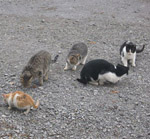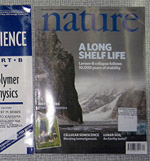Blending economics and ecology to protect bird habitat in the tropics
 Birds,
Birds,  Economics,
Economics,  Planning,
Planning,  Preservation
Preservation  Bicknell's thrush (Catharus bicknelli). Image credit, Henry Trombley.
Bicknell's thrush (Catharus bicknelli). Image credit, Henry Trombley.
Scientists have used an innovative planning tool to prioritize voluntary land acquisitions from farmers to protect the threatened Bicknell's thrush in the Dominican Republic.
Charles Kerchner from the University of Vermont along with fellow researchers used TAMARIN, a GIS based tool that looks at species habitat requirements along with likely acquisition costs for individual parcels.
They tested the method in a study published in the journal Ecological Economics. The results provide a blueprint for program staff in the Dominican Republic to target their efforts.
The advantage of the TAMARIN approach is that by considering land costs it can improve the overall conservation benefit of the program versus just looking at habitat alone.
Based on the analysis, they came up with multiple protection scenarios depending on budget level. Under one scenario, the program could spend $5.5 million to acquire over 22,000 acres of habitat that would link up two existing protected areas.
Another innovative aspect of this program is that it will utilize mitigation funding for impacts to Bicknell thrust breeding habitat from a planned ski area expansion on Whiteface Mountain in New York. Typically, mitigation funding goes to conserve habitat similar to that impacted by the project.
But the Bicknell thrush is largely threatened because of habitat loss in its wintering grounds in the Caribbean. So somehow people came up with the idea of directing the mitigation money toward protecting remaining wintering habitat.
In my experience this is highly unusual for mitigation but it provides an interesting alternative approach to species conservation. The argument for this approach becomes especially compelling when you consider what $5.5 million seems to buy in the Dominican Republic (and likely other tropical countries) compared to the United States.
Another argument for this approach is that in places like the Cordillera Septentrional of the Dominican Republic where this project is being implemented, biodiversity and endemism levels are extraordinarily high. So protecting wintering habitat for US migratory birds may translate into conservation benefits for a host of other threatened species.
At the same time, the study outlines some potential drawbacks to the program. First, a land acquisition program assumes that there will be willing sellers.
Even more problematic, just because an area is designated as 'protected' does not necessarily mean that it is free from threats - especially in countries with high deforestation rates like the Dominican Republic. We just profiled a recent study that showed that deforestation rates in protected areas in Jamaica were just as high after being designated a park as before.
Nevertheless, this innovative approach to conservation planning and funding provides an interesting model that merits greater attention.
--Reviewed by Rob Goldstein
Kerchner, C., Honzák, M., Kemkes, R., Richardson, A., Townsend, J., & Rimmer, C. (2009). Designing spatially explicit incentive programs for habitat conservation: A case study of the Bicknell's thrush wintering grounds Ecological Economics DOI: 10.1016/j.ecolecon.2009.08.031




Reader Comments